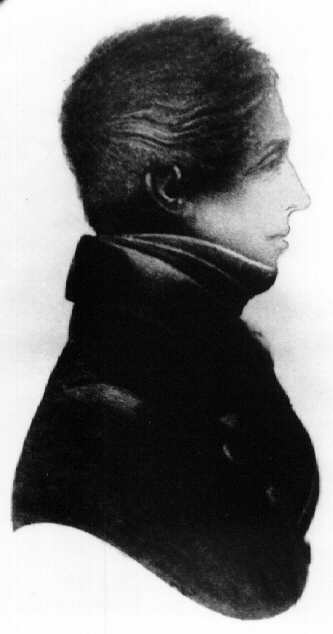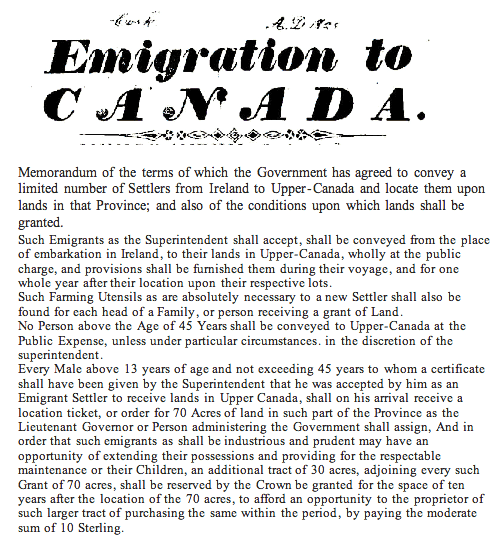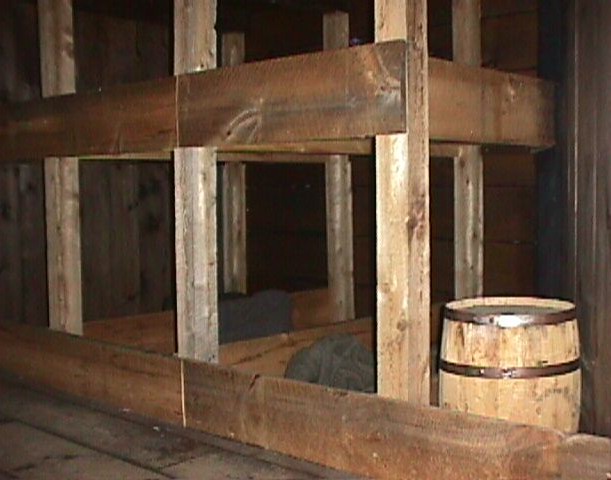Some information on Peter Robinson, who arranged the Irish settlers trip to
Canada in 1823 (and more in 1825)
 Only known image of Peter Robinson
Peter Robinson, the son of Loyalists and elder brother of Upper Canada's powerful
Attorney General, John Beverley Robinson, was asked to manage this emigration scheme
in 1822. At the time he was a politican living in York (later Toronto).
Only known image of Peter Robinson
Peter Robinson, the son of Loyalists and elder brother of Upper Canada's powerful
Attorney General, John Beverley Robinson, was asked to manage this emigration scheme
in 1822. At the time he was a politican living in York (later Toronto).
He sailed for Britain and began forming a workable emigration plan and recruitment
programme. He promoted the scheme in southern Ireland and some 50,000 people applied
to start new lives in a strange and distant land.
In 1823 the first wave of Irish settlers (568 people) began the long and dangerous
journey to Upper Canada with their final destination in eastern Ontario (Lanark,
Perth, Ramsay township area).
Two sailing ships - the "Hebe" and "Stakesby" (with Peter himself on the Stakesby) carried settlers
in cramped and dank quarters - although nothing like the notorious "coffin ships" that
carried thousands to North America during the potato famine of the 1840's.
The ships landed at Quebec City and the passengers boarded steamships, then barges,
then wagons for the final leg. Settlers were given free provisions, tools and farm land!
Above taken from Peteborough Centennial Museum and Archives.
Below is rough scan of header of the ad that Robinson used in Ireland, along with the full text of the ad.

Below is a picture of the crowded 'sleeping quarters' that were aboard the ships.

Some further information, excerpted from the book The Blackwater Region and Ontario, Canada by Christy Roche,
also reveals some more details of what the government (and Robinson) were looking for in the settlers, and what they were giving them:
The Canadian Government at that time were looking for farmers to settle and develop
agriculture in their country and in order to obtain the right sort of settler they paid
the passage for the farmer and his whole family and granted him seventy acres. As most
of the land holdings in pre-Famine North Cork were ten acres or less, this Canadian
holding must have seemed attractive to the impoverished Irish small farmer. To be
eligible for this package one had to be under 45 years of age and have a recommendation
from a landlord, magistrate or clergyman.
Every male between the ages of 18 and 45 was entitled to 70 acres and an iron pot and
each group of families also got four cross-cut saws, 12 land saws, 12 hammers and a
cask of nails.



